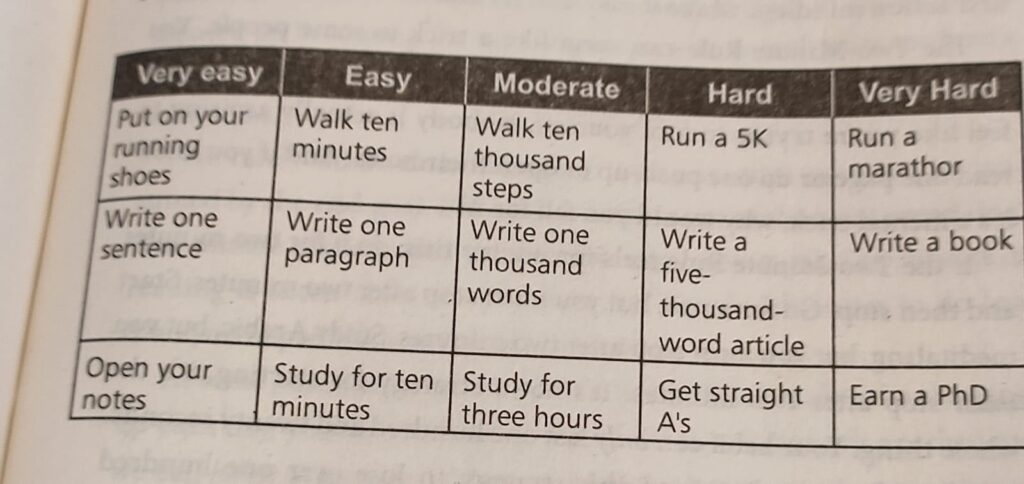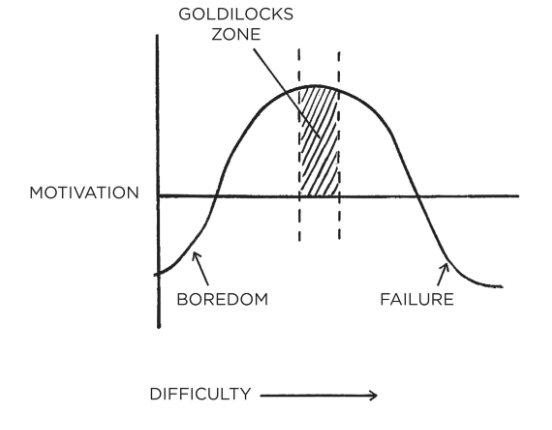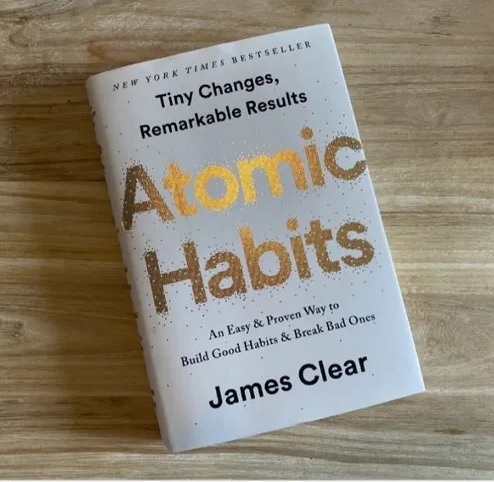We are told about what are good habits & what are bad habits since our childhood. Waking up early, brushing your teeth two times a day, and doing your homework are examples of good habits we cultivate during our childhood. Our Habits go a long way in defining our life. Atomic Habits by James Clear gives us in-depth information about various measures to cultivate good habits and break bad ones.
Atomic Habits are basically a routine or a practice performed consistently over a long period that generates an automatic response to a specific situation. James Clear has talked about various fundamentals, different laws & Tactics in his book that are amazing and provide a pathway to develop good habits and break bad ones. One such strategy is “the aggregation of marginal gains” which simply is to search for a tiny improvement in everything you do.
Fundamentals of creating good habits
Whether it is losing weight, building a business, writing a book, or achieving any other goal we put pressure on ourselves to make some sudden transformation that is literally impossible to achieve. Instead improving by 1 percent every day which isn’t even noticeable at the start can be more meaningful, especially in the long run. Another important concept mentioned in this book is “If you want better results then forget about setting goals, focus on your system instead. May times we become so obsessed and at times overburdened by our goals that we completely ignore the system involved in reaching that goal. Instead, if we focus and believe in our system without thinking too much about our goals, we will eventually reach our goals due to our strong & well-developed system.
Another important concept mentioned in this book is that if you want to change your habit you need to change your identity. For this, a small example is given in this book about 2 people resisting a cigarette. When offered the first person says “No thanks, I am trying to quit. This is a reasonable response but this person still believes that he is a smoker who is trying to do something else. In the case of a second person, he declines by saying “I am not a smoker”. It’s just a small difference but this statement indicates the shift in identity. Smoking was part of their former life and not their current one.
What is a Habit?
A Habit is a behavior that has been repeated enough times to become Atomic. The meaning of habit is simply & effectively explained in the book Atomic Habits by James Clear.
The process of habit can be divided into four simple steps cue, cravings, response, and reward. First, there is a cue which is a bit of information that predicts a reward. Because cues are the first indication that we are close to a reward it naturally leads to craving. Every craving is linked to a desire to change your internal state. For Eg: you are motivated not by brushing but by the feeling of a clean mouth. You do not want to turn on the television but you want to be entertained. The third step is the response. The response is the actual habit you perform. Whether a response occurs depends on how motivated you are and how much friction is associated with the behavior. Finally, the response delivers a reward. Rewards are the end goal of every habit.
Check out the example given below
Cue – You Wake up
Craving – You want to feel fresh & energized
Response – You drink a Cup of Tea /Coffee
Reward – You satisfy your cravings to feel fresh and energized.
Drinking Tea or Coffee becomes associated with waking up.

The Four Laws of Behavior Change
The framework of the four laws of behavior change provides a simple set of rules for creating good habits and breaking bad habits. You can think of each law as a lever that influences human behavior. When the livers are in the right position creating good habits is effortless & when they are in the wrong position it is nearly impossible.
How to Create a Good Habit
The 1st Law (Cue) – Make it obvious
The 2nd Law (Craving) – Make it attractive
The 3rd Law (Response) – Make it easy
The 4th Law (Reward) – Make it Satisfying
For example, if you want to develop a habit of reading a book before you go to bed. then simply, keep that book on your bed or a table near your bed. Once you come to your bed to sleep you will see the book which is a cue & you will crave to take valuable inputs from the book. Since the book is very close, you can easily take it for reading & after reading for some time you will feel satisfied as you have fed your mind with some positive thoughts or you felt entertained by reading the story.
How to Break a Bad Habit
Inversion of the 1st Law (Cue) – Make it invisible
Inversion of the 2nd Law (Craving) – Make it unattractive
Inversion of the 3rd Law (Response) – Make it difficult
Inversion of the 4th Law (Reward) – Make it unsatisfying
A small example to explain this. You have a bad habit of spending time browsing through your social media feeds before sleeping. Then keep a phone somewhere away from your bed in such a way that it becomes invisible (Maybe in some corner of your room or maybe in some other room). Once the cue becomes invisible naturally there will be no craving. Once there is no craving it will be difficult to respond & with no reward in sight, the process will be unsatisfying.
The Two-Minute Rule
The two-minute rule given in this self-help book is another game changer. Two-minute rules state that when you start a new habit, it should take less than two minutes to do. You will find that almost any habit can be fitted into a two-minute version.
Read before bed each night becomes read one page, study for class becomes open my notes, run three miles becomes tie my running shoes & so on. An idea is to make a new habit as easy as possible to start. This is an extremely effective strategy as once you have started the right thing it is much easier to continue it.

For instance, If you are a beginner running a marathon is very hard, Running for 2 hours is hard, walking ten thousand steps is moderately difficult, walking ten minutes is easy, and putting on your running shoes is very easy. Your ultimate goal is to run a marathon but your gateway to habit is to put on your running shoes. That’s how you follow the two-minute rule.
Habit Tracker
Habit Tracker is a simple way to measure whether you did a habit – like marking an X on a calendar. Habit Trackers and other visual form of measurement make your habits satisfying by providing clear evidence of your progress. One of the most satisfying feelings in life is the feeling of making progress. Always try to keep your habits streak alive and yes don’t break the chain. However, in this data-driven world people tend to get obsessed with measurement devices. So don’t focus just on measurement but focus on implementation.
The Truth about Talent
This is another concept explained in the Book Atomic Habits by James Clear. As per this concept, the secret to maximizing your odds of success is to choose the right field of competition. Pick the right habit and the progress is easy, pick the wrong habit and life is a struggle. Habits are easier when they align with your natural abilities, so choose the habits that best suit you. As the author rightly mentions
“Play a game that favors your strengths, if you can’t find a game that favors you create one”
Goldilocks Rule

This is another awesome rule shared in this self-help book called the Goldilocks Rule. The Goldilocks rule states that humans experience pick motivation while working on tasks that are on the edge of their current abilities. Not too hard, Not too easy just right. When you are starting a new habit it’s important to keep the behavior as easy as possible so that you can stick with it even when the conditions are not perfect. However, once the habit has been established it is important to continue to advance in small ways. These little improvements and new challenges will keep you engaged. And if you hit the Goldilocks zone you can achieve the flow state & keep advancing.
Habits + Deliberate Practice = Mastery
This is another masterpiece from this book. Mastery is the process of narrowing your entire focus to a tiny element of success and keeps repeating till you have become the master of that skill and then using this new habit as the foundation to advance to the next frontier of your development. Tasks that are done consistently become easier over a period of time, but it does not get easier overall because you are now putting all your efforts and energy into the next challenge. Each habit unlocks the next level of performance. It is an endless cycle.
Conclusion
Many people think that they need a massive transformation in a short period of time to be successful in this game of life. However habit expert James Clear has discovered the other way. As per the author, real change comes from the compound effect of hundreds of small decisions. When you layer the small changes on top of one another the scale of life starts to move. Small daily improvement is like adding a grain of sand to the positive side of the scale slowly tilting things in your favor. If you continue sticking with it you hit a tipping point. Suddenly it feels easier to stick to good habits. The weight of the system is working for you than against you.
Over this book, the author has shared stories of successful people like Olympic gold medalists, business leaders, star comedians & award-winning artists who have all used the science of small habits to master their craft & reached the top of their fields. Each of these people, teams, and companies in spite of various hurdles has ultimately progressed in the same way through a commitment to tiny sustainable, unrelenting improvements.
Success is not a goal to reach or a finish line to cross. It is a system to improve, it is an endless process to refine. It is remarkable what you can achieve when you don’t stop. It is remarkable the business you can build if you don’t stop working, it’s remarkable the body you can build if you don’t stop training, it’s remarkable the knowledge you can build if you don’t stop learning, it’s remarkable the fortune you can build if you don’t stop saving & it’s remarkable the friendship you can build if you don’t stop caring. Small habits don’t add up they compound. That’s the strength of Atomic Habits. Tiny changes, remarkable results.
So this is my review of Atomic Habits a self-help book by James clear. It is a pretty long review so thanks for reading up to this point. And yes do read this entire book to know much more about the power of habit-building.
Also, if you want to read more self-help book reviews, you can read my short review about The Monk Who Sold his Ferrari which is another gem of a book by Robin Sharma.
So thanks again & wish you all a healthy, wealthy & prosperous time ahead.
